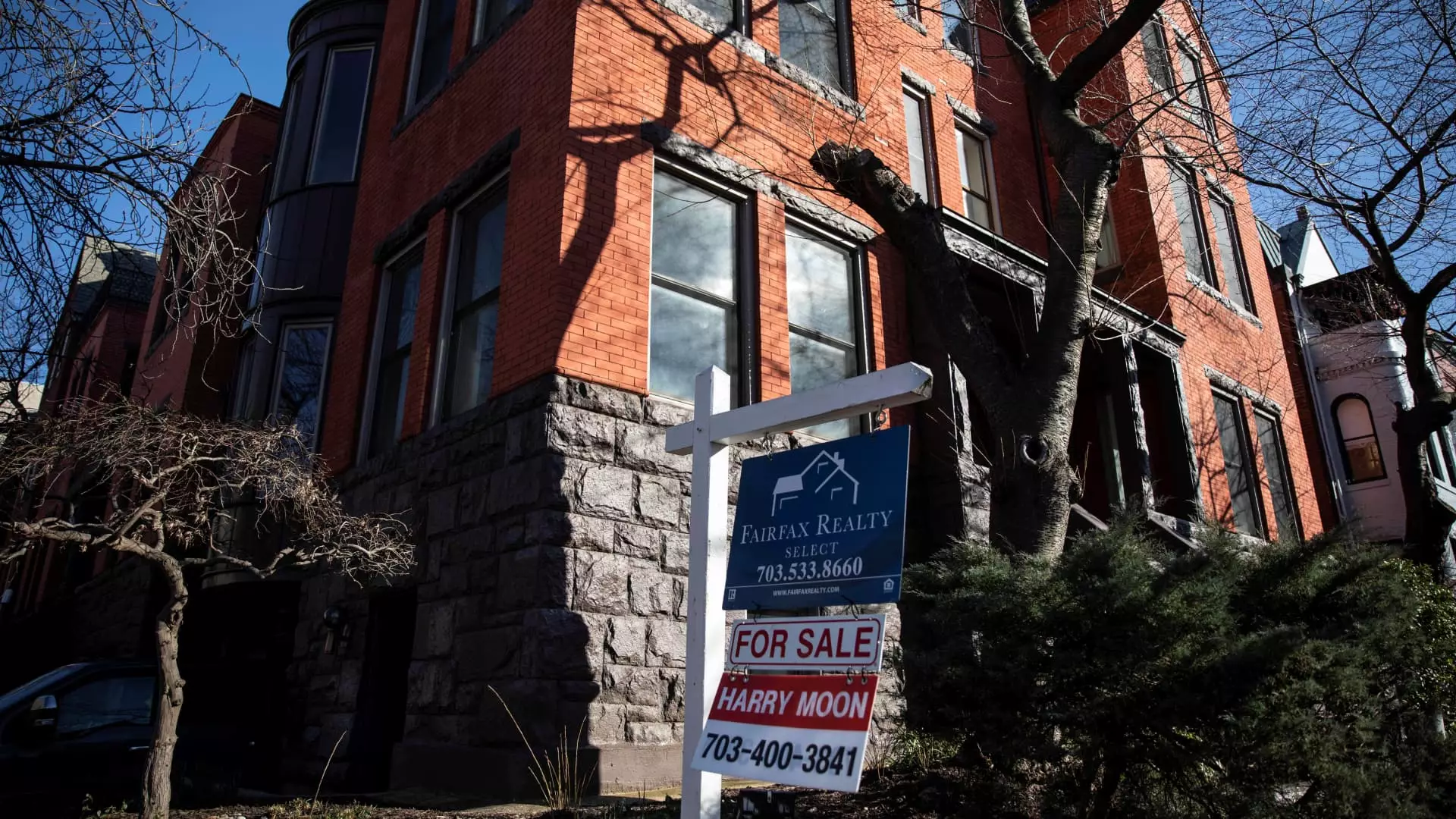In a striking turn of events, the Washington, D.C. metropolitan area is witnessing an extraordinary spike in housing inventory, with active listings soaring 56% compared to the same period last year. This massive rise, represented in stark figures, unveils not just a trend but a potential crisis, beckoning deeper scrutiny into the underlying causes and ramifications. As we examine this development, it becomes evident that the increase in home supply is symptomatic of broader economic uncertainties affecting one of the nation’s most pivotal markets.
Historically, real estate markets experience a predictable upturn as spring approaches. However, the D.C. area’s 41% year-over-year inventory rise in February dwarfs national averages and raises eyebrows. The troubling element is that this increase is not merely the result of sellers eager to cash in; it signals a hesitation among buyers spurred by a mix of economic anxiety and recent federal employment shifts. Such dynamics could be interpreted as a harbinger of an impending housing market contraction, where oversupply could lead to price reductions and a more sluggish economic climate.
A Market in Flux: Layoffs and Flagging Demand
The correlation between federal layoffs and the current housing market conditions manifestly illustrates how intertwined economic factors impact residential real estate. Notably, Danielle Hale, chief economist for Realtor.com, highlighted the stilling of D.C. home search activity due to federal job cuts. This concern resonates deeply in a city characterized by its significant federal employment base. With the job market tightening, potential homebuyers may be instinctively moderating their aspirations, skeptical of committing to significant financial investments amid such uncertainty.
More pointedly, the national trend of a 28% increase in active listings amid declining mortgage rates adds another layer of complexity. Buyers are increasingly skeptical, especially when faced with a median mortgage rate that has recently tumbled from 7.25% to 6.82%. While affordability may superficially seem to improve, the psychological barriers to buying are formidable when the job market appears precarious and income stability is called into question.
The Evolution of New Listings: A Mixed Bag
In this climate of anxiety, a more profound recognition of the dynamics of new listings is essential. Although newly available properties have increased by 24%, returning to pre-pandemic levels seems insurmountable. The surge in listings is more reflective of economic shifts than a robust demand from buyers. Consequently, we witness homes languishing on the market longer, raising the median days on market—a clear indicator of buyer indecision and prevailing uncertainty.
Interestingly, the region has also seen a boom in new condominium and townhome constructions. While this should theoretically bolster market supply, it begs the question: Are these new homes meeting actual buyer demand, or are they compounding the oversupply challenge? As more condominiums come online, the market risks an oversaturation, particularly when it comes to smaller, lower-end homes which now dominate the landscape, driven by changing buyer preferences and economic factors.
The average listing price has seen a decline of 1.6% year-over-year, a trend worth monitoring in the wake of inflated housing costs during the pandemic. However, with the median price per square foot increasing slightly, it indicates a shift in the types of properties on offer rather than an overall market recovery. Such fluctuations within the market should serve as cautionary tales.
A Ripple Effect Beyond D.C.
The ramifications of the housing market’s peculiar shifts in D.C. may echo far beyond its borders, with other federal-dependent markets likely to experience similar patterns as economic conditions evolve. The potential for these dynamics to exacerbate economic disparities in regions heavily reliant on federal employment is alarming. Thus, the D.C. housing market isn’t just a local issue; it’s a litmus test for how national economic uncertainties might disrupt regional markets throughout the country.
Taken together, these emerging patterns reflect a more significant ongoing narrative: economic challenges compounding housing supply dilemmas, leading to potential market instability. Understanding this interplay is essential as D.C. contends with not just a housing dilemma but an economic one that could redefine the landscape of home ownership in a city that has long been considered a barometer for national economic health.


Leave a Reply